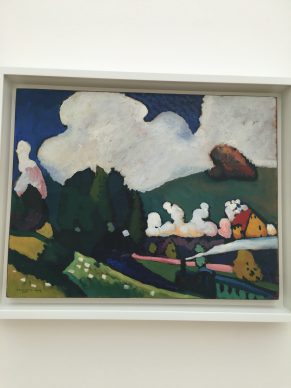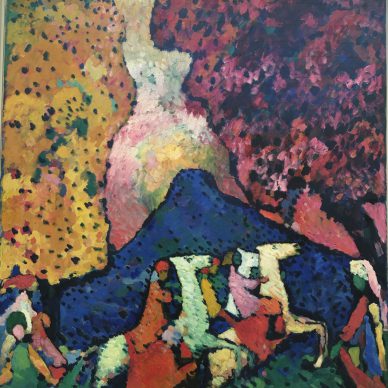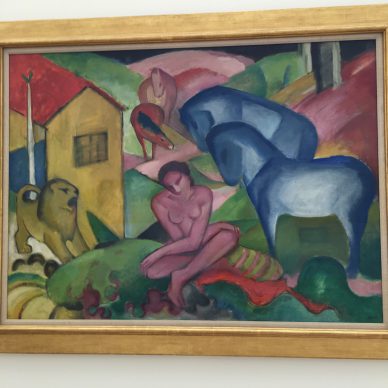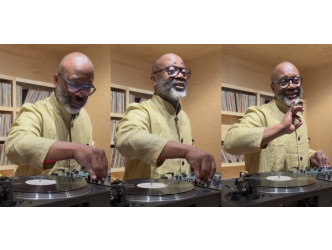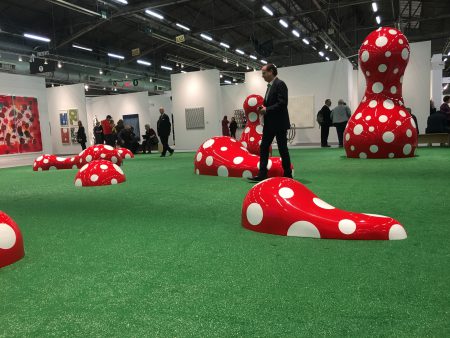At the turn of the 20th century, with Europe about to be shaken by a world war and a revolution, the world of painting was also in a state of extreme turmoil.
The objective was to destroy the old order.
In Paris, then global epicentre of the avant-garde, but also Berlin, Moscow, Vienna and even Munich, groups of artists were all launching, each in their own manner, revolutions in painting that would go on to change the course of the history of art forever. Until 22th January Basel‘s excellent Fondation Beyeler will be holding an exhibition that zooms in on a place and a short window of time which are often overlooked: Munich from 1908 to 1914.
More specifically, it shows two great artists from the period, the Russian Wassily Kandinsky, future inventor of abstraction, and his German accomplice Franz Marc, whom he met on 1 January 1911.
Samuel Keller, the director of the Fondation Beyeler explains the idea for the show:
One room is devoted to Kandinsky and Marc’s joint project, which is an almanac; a sort of breviary for an iconoclastic avant-garde with a wide-ranging interest in Henri Rousseau, the popular arts, Robert Delaunay, distant civilisations… and which they published on 11 May 1912.
Its name, The Blue Rider (Der Blaue Reiter) derives from the fact that both painters loved the colour blue, horses and knights.
The demonstration in 70 paintings and some twenty objects is brilliant primarily because its sheer beauty transports the viewer. But it also shows the evolution of the two talents: Kandinsky, the undisputed genius who would enjoy long career, and Marc, who was more restrained and would fall into almost complete obscurity following his premature death in Verdun in 1916.
The exhibition curator Ulf Küster explains why Kandinsky is better known than Marc:
The two men demonstrate a complete mastery of colour. The tones are bright and highly contrasted. They explose literally on the canvas like a thirst for life.
Ulf Küster sheds some light on the use of colour by the two artists:
Kandinsky wants to get away from figurative subjects. He progressively dilutes them. His forms are no more than halos of colours. He’s guided by a certain mysticism and by the desire to transpose the music of Schoenberg into painting.
Franz Marc, fascinated by animals, paints fauna, flora and sometimes human beings in stylised whirlwinds that betray his desire to give an illusion of movement.
The theories of the French painter Delaunay and his orphism had an impact on him.
In 1916 Marc died a war hero, fighting on the German side, while Kandinsky for his part made the subject disappear.
The immense “Composition VII” which usually hangs in the Tretiakov Gallery in Moscow is alone worth the journey to Basel: it is a myriad of paintings in a single work, destroying the principle of classical composition.
The colours and the materials jostle, clash and overlap with no central subject. The canvas is the battleground of the new aesthetic war for non-representation that was then in progress.
And it’s simply sublime.
http://www.fondationbeyeler.ch/en/Home
Support independent news on art.
Your contribution : Make a monthly commitment to support JB Reports or a one off contribution as and when you feel like it. Choose the option that suits you best.
Need to cancel a recurring donation? Please go here.
The donation is considered to be a subscription for a fee set by the donor and for a duration also set by the donor.


